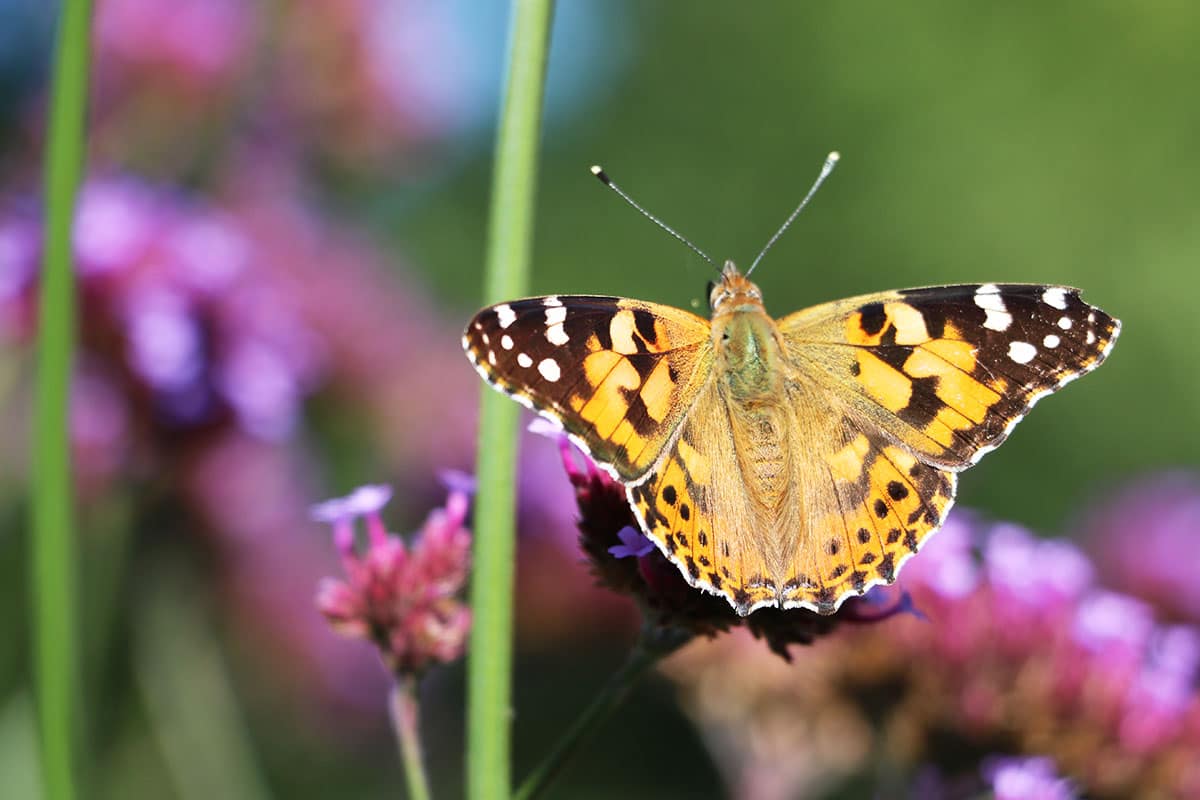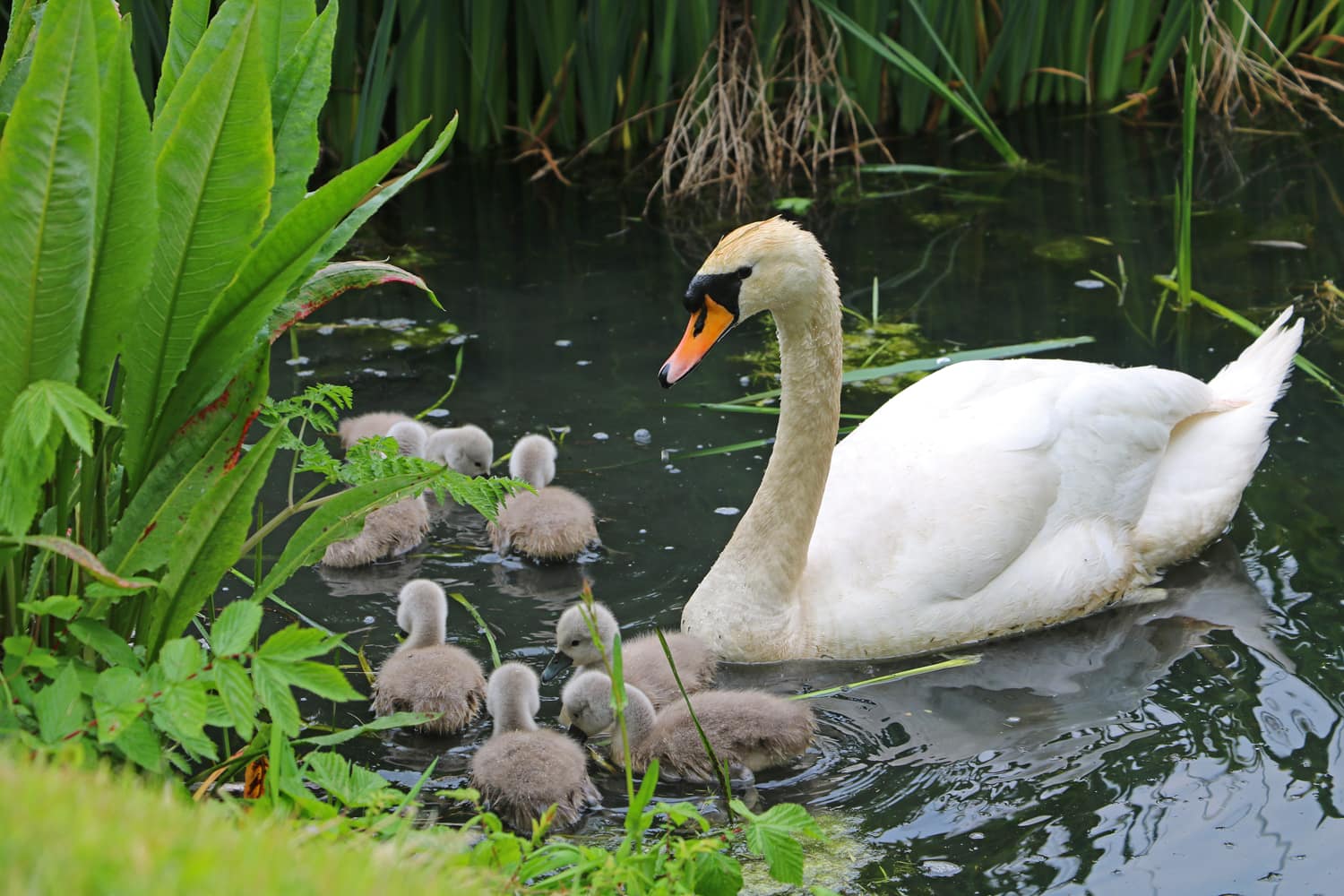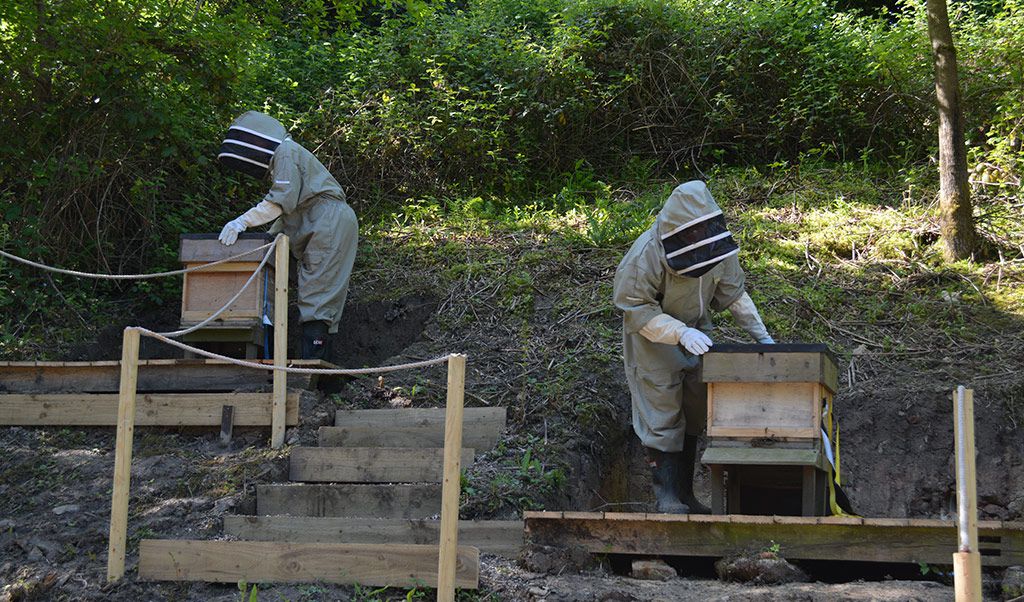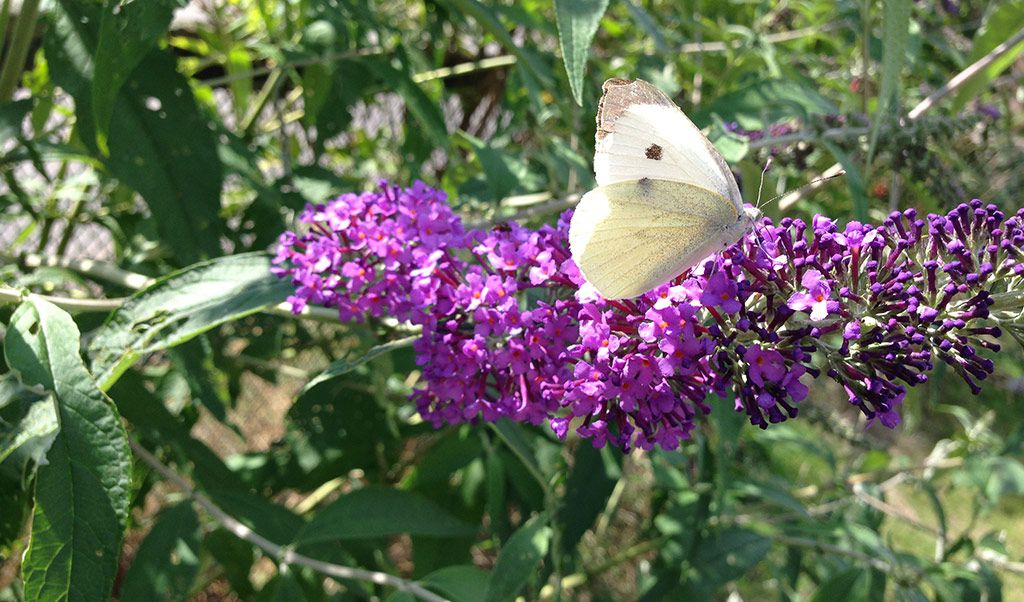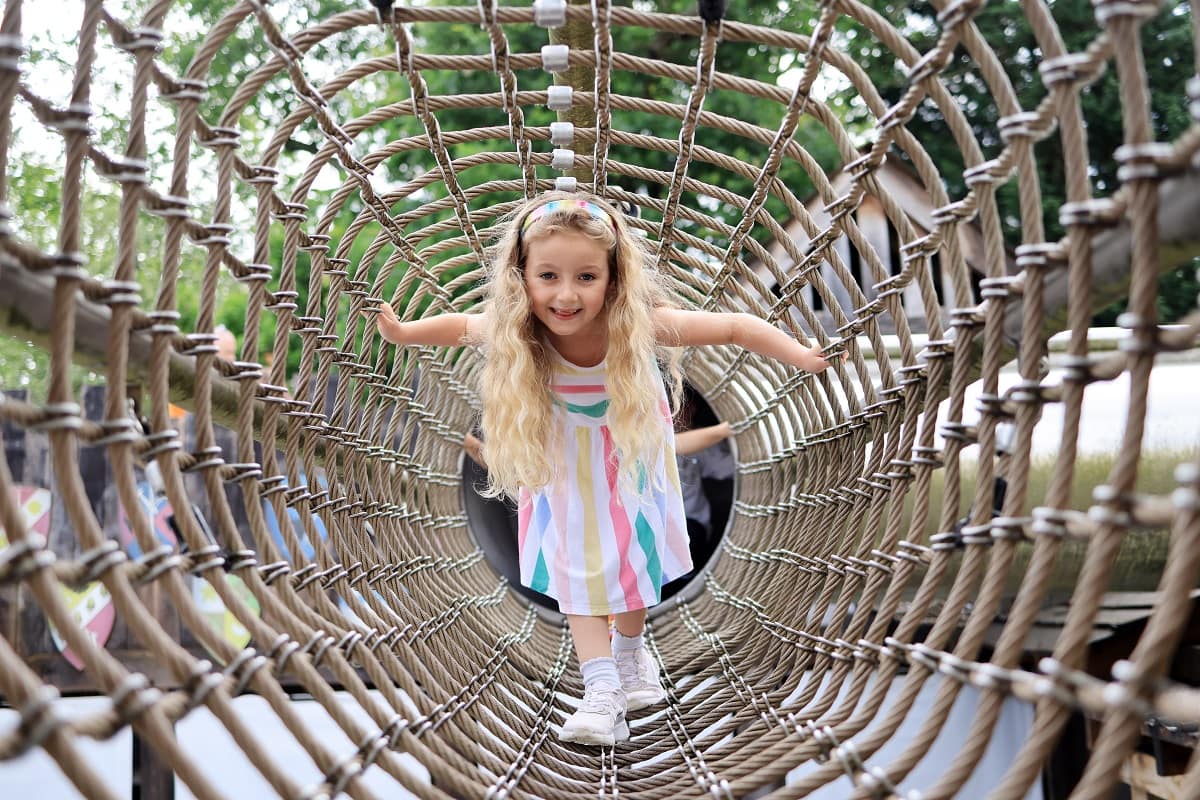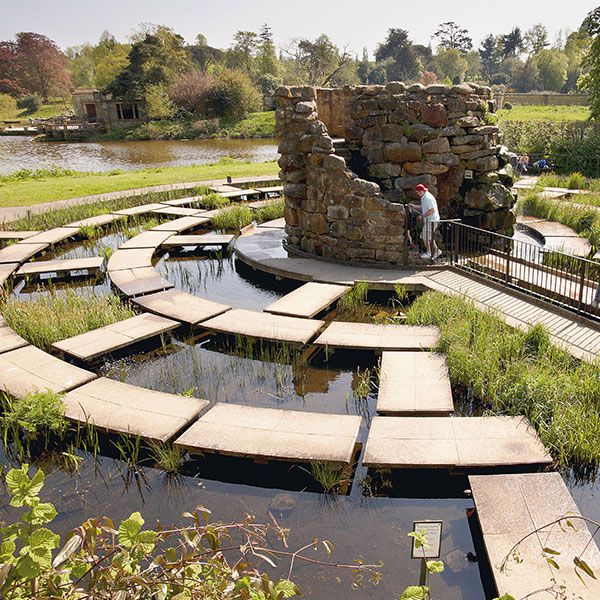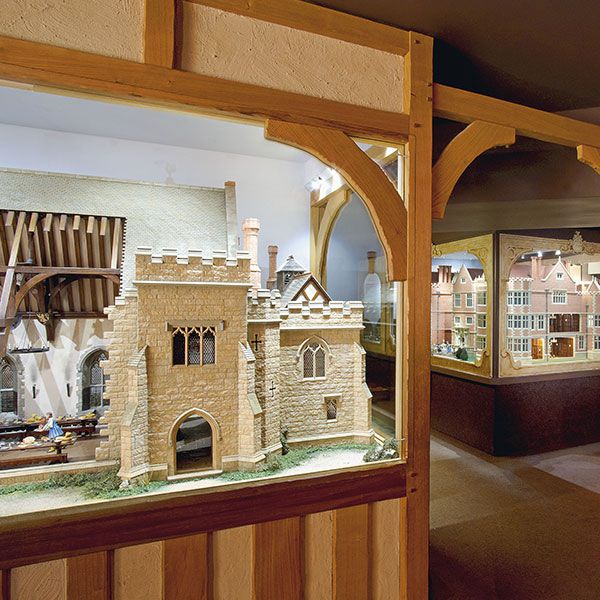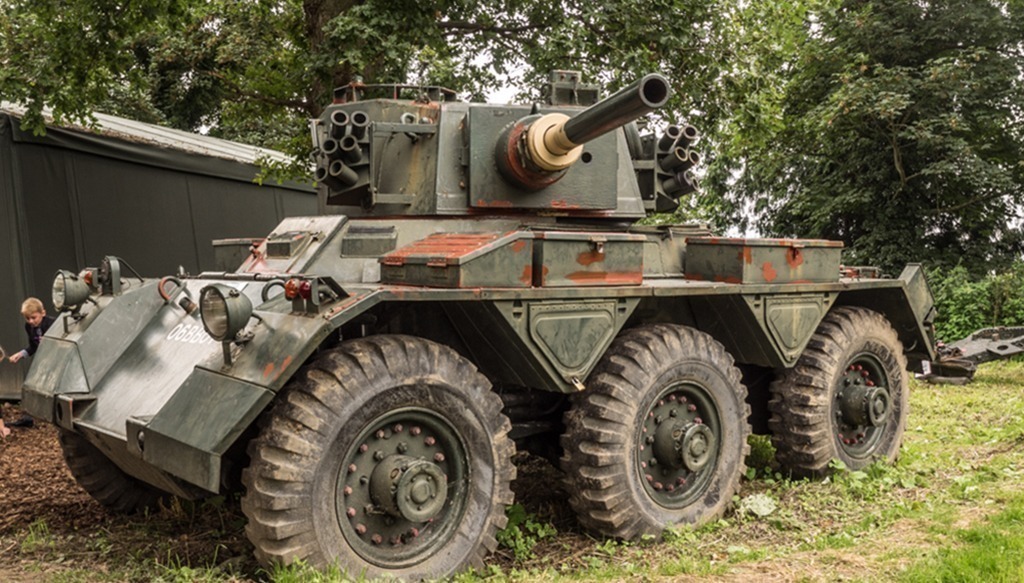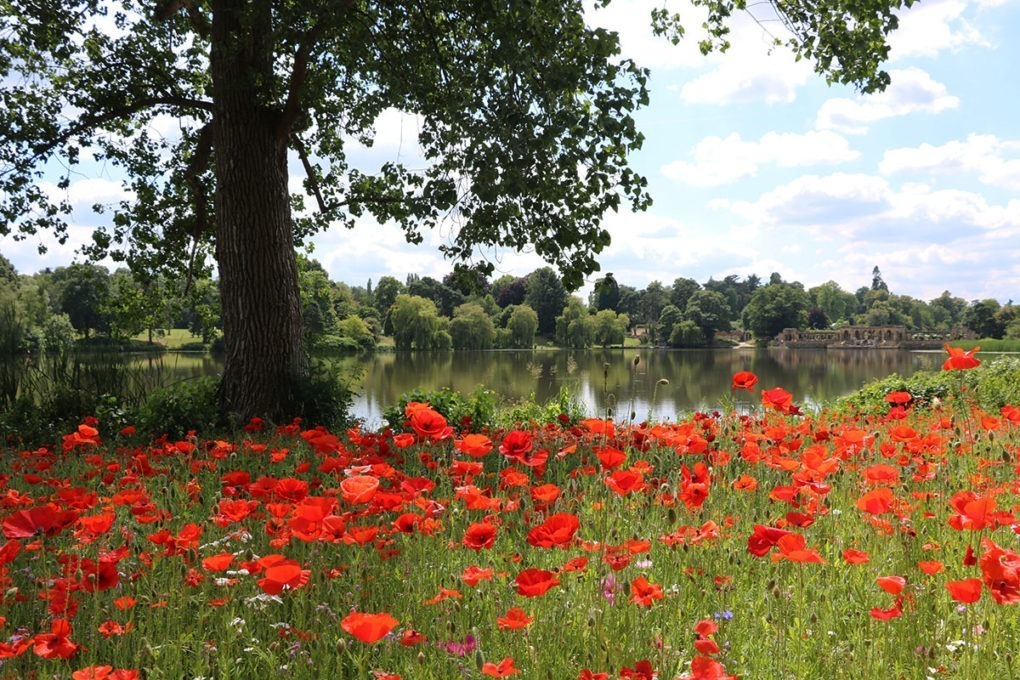
Local Wildlife Sites Award
Hever Castle has been awarded a Silver Award from the Kent Wildlife Trust for implementing management advice suggested by the Trust. Hever Castle was particularly commended on the work we’ve done to maintain low input grassland and create and manage meadows using traditional techniques. It was also noted that we manage ponds and ditches sensitively and that buffers have also been established around these features.
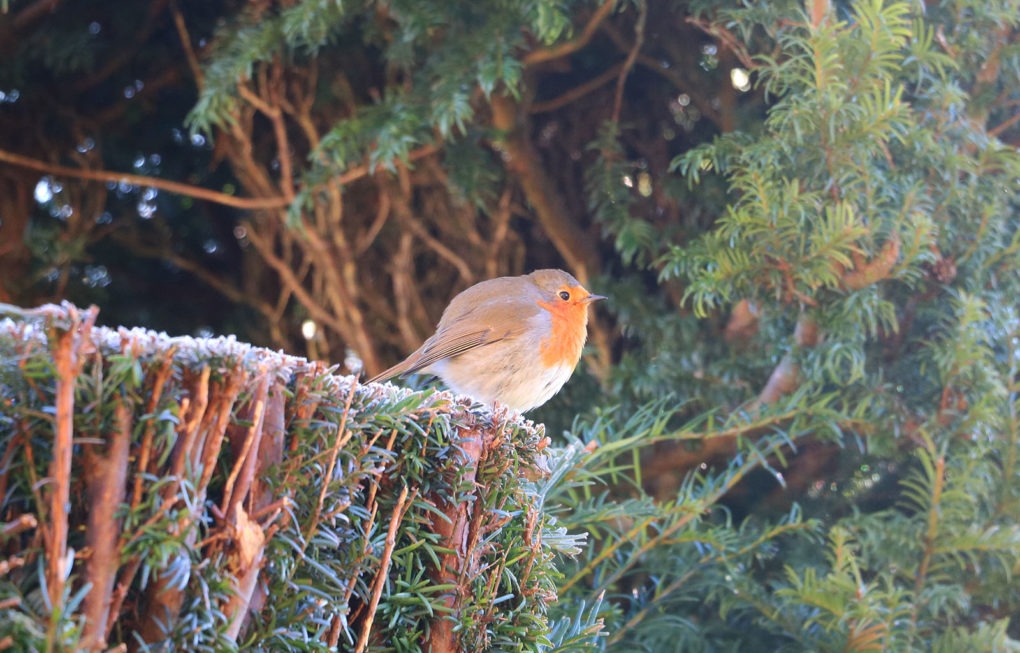
Birds & Waterfowl
In the grounds you will usually see mallard ducks and some rather more unusual mandarin ducks, moorhens, mute swans and sub-species called polish swans that they have much paler legs. The most obvious difference is that their cygnets are much closer to white, rather than the usual grey. The current quartet is particularly fascinating as two of them are white and the other two are grey.
Take a peaceful walk around the lake and along the way see bird boxes that are home to owls, blue tits, robins and woodpeckers and look out for kingfishers, swans, herons and great crested grebes on the lake itself. Tawny owls, barn owls, common tern are also hugely impressive when they appear to almost hover above the lake and dive down to catch a fish.
In the reed beds, watch for wrens nesting in the litter and listen out for reed warblers and their distinctive sound. Reed warblers have increased in recent years due to the sewerage lagoons planted ½ mile away from the lake which has also become a fantastic haven for insect life and a very healthy eco system.
The magnificent sound of the nightingale is a good reason to stay in the Astor Wing in the earlier part of summer. On a quiet evening when visitors have exited the grounds you may be lucky enough to hear is glorious song. In recent years this bird song has become more common place around the lake and the river.
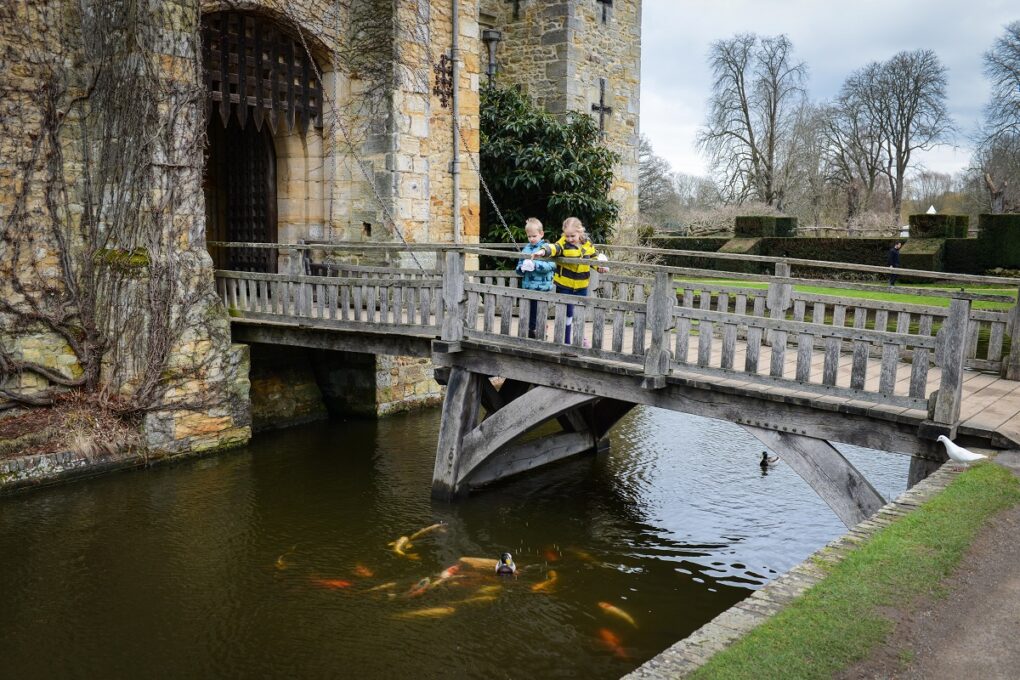
Fish & Amphibians
In the Moat and also on Half Moon Pond you can spot a great number of fish including koi carp. In the Lake there are eels as well fresh water bream, roach and rudd to name a few. Frogs and toads and newts are also plentiful around the grounds.
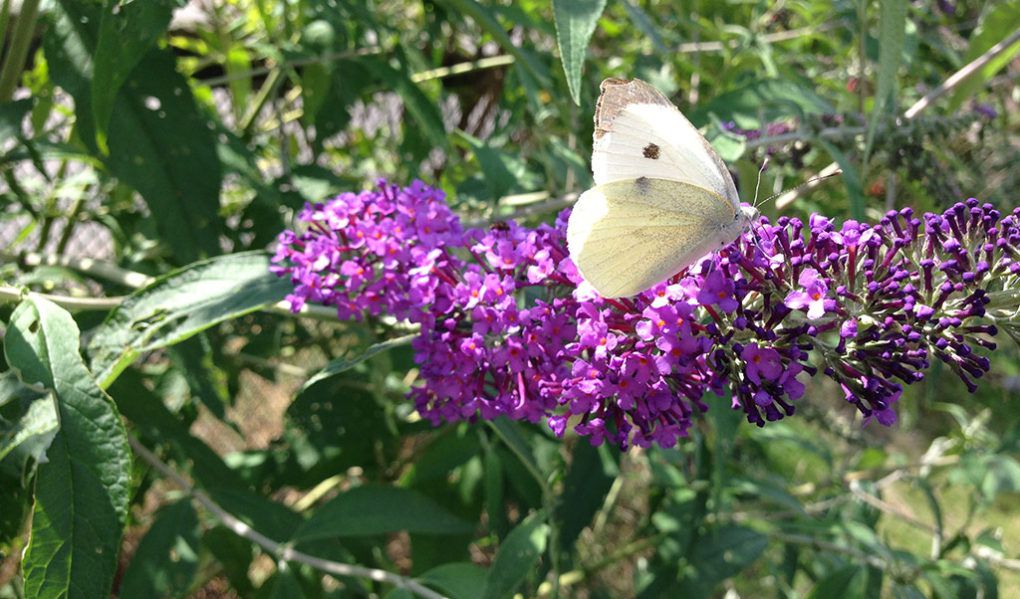
Insects
Elephant hawk moths have been spotted on the Hever Estate and more recently hummingbird hawk-moths with their unusually long proboscis, hovering behaviour and an audible humming noise, which make it look remarkably like a hummingbird while feeding on flowers.
There is a tremendous presence of butterflies throughout the summer, particularly when buddleja and valerian is in bloom including: painted ladies, skippers, commas, peacocks, large orange flatilaries, orange tips, common meadow brown and red admirals. In the last two years we have seen a noticeable increase in small tortoiseshells and speckled woods. We allow the nettles to grow in certain places as they are such a good food source for caterpillars.
Large array of dragon flies as well as smaller damsel flies grace the grounds with their magnificent colours and flight.
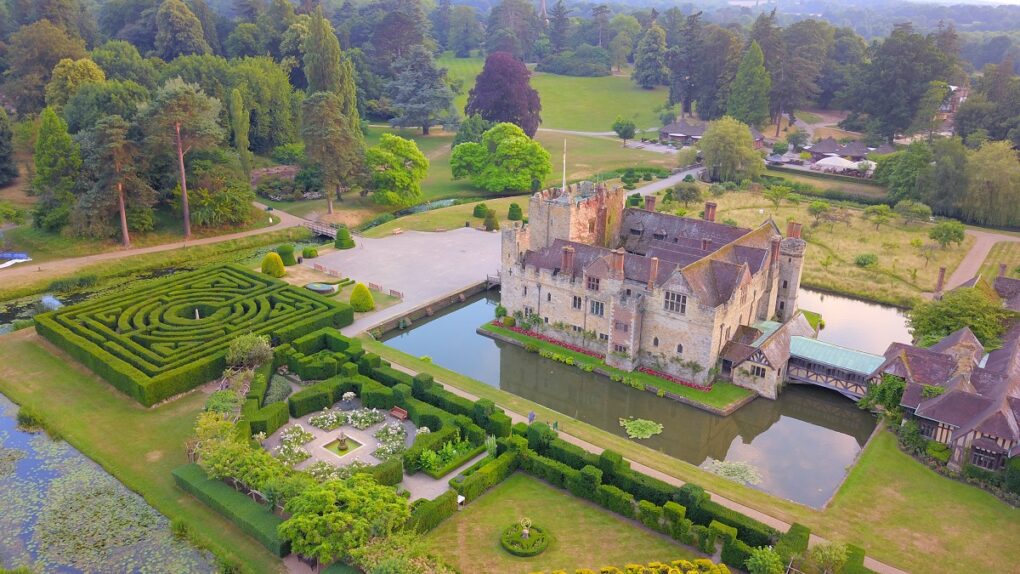
Mammals
Bats, a great many pipistrelle and long-ears, help to keep mosquitos down and eat a lot of insects. Otters have also been spotted on the river system although we haven’t seen any recently.
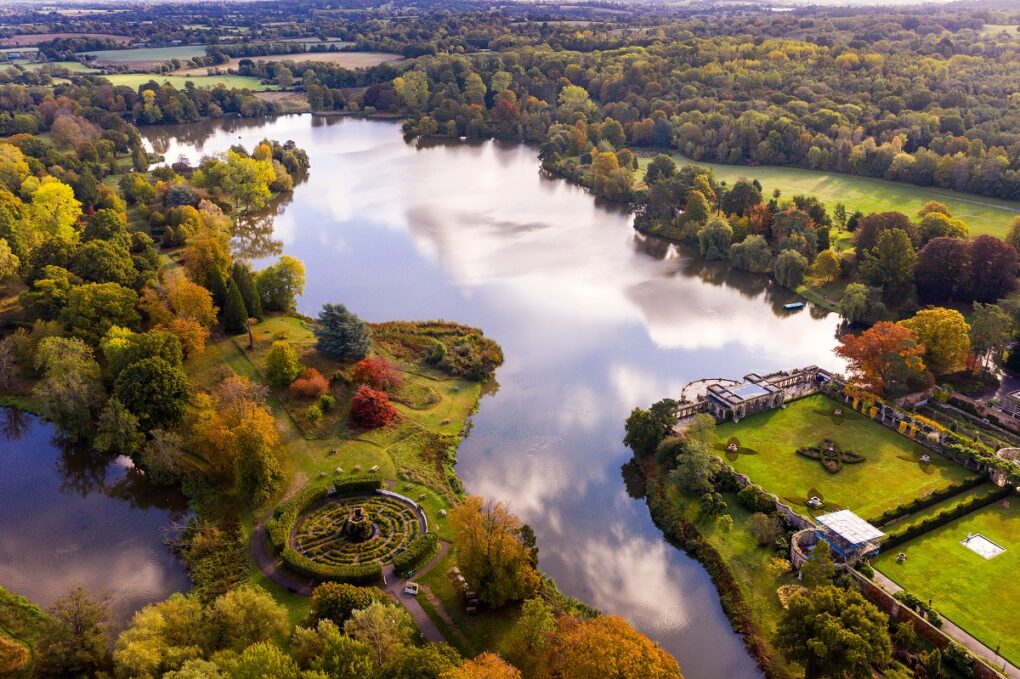
Molluscs
We have a large and healthy population of freshwater mussels in the Lake. Not for human consumption but they do a great job of cleaning the water.
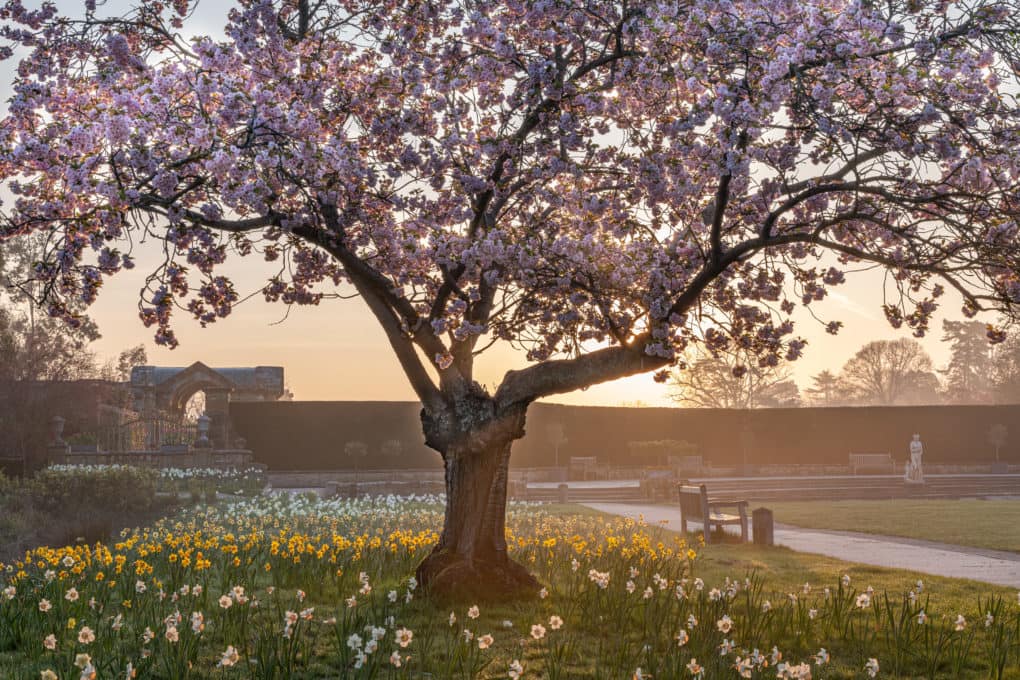
Trees
In Anne Boleyn’s Orchard, which can be seen from Topiary Walk on the approach to the Castle, a wide variety of apples and pears grow, many of which are old English varieties.
Autumn is the season when Hever’s striking trees come to the fore. If you are strolling through the grounds may be lucky enough to catch the mouth-watering smell of the Katsura tree with its toffee-like aroma. As winter approaches, the warm red bark of the redwood trees glow against the winter sky.
Chestnut Avenue, a feature of the Lake Walk is remnant of the original long avenue planted with Chestnut Trees 1904-1908 designed to lie on the same axis as the Long Gallery in the Castle. The avenue started from the side of the outer moat and ran the whole length of Sixteen Acre Island and beyond. The avenue suffered extensive damage from the ‘Great Storm’ of October 1987. The remaining trees are under attack from leaf minor and bleeding canker. The Horse Chestnut trees are being replaced with more resilient Spanish Horse Chestnut.
Some more unusual trees include Handkerchief Tree (Davidia involucrata), near Half Moon Pond, which looks spectacular in May.
Other trees that you will see on Lake Walk include:
• Populus Deltoid (Poplar) – Used to manufacture match sticks.
• Pinis Nigra (Corsican pine) – Twisted needles which look like bottle brushes. Drought tolerant.
• Pimus Sylvestris (Scots pine) – These were transplanted from the Ashdown Forest.
• Taxodium (Swamp cypress) – produces aerial roots along the ground.
• Copper Beech
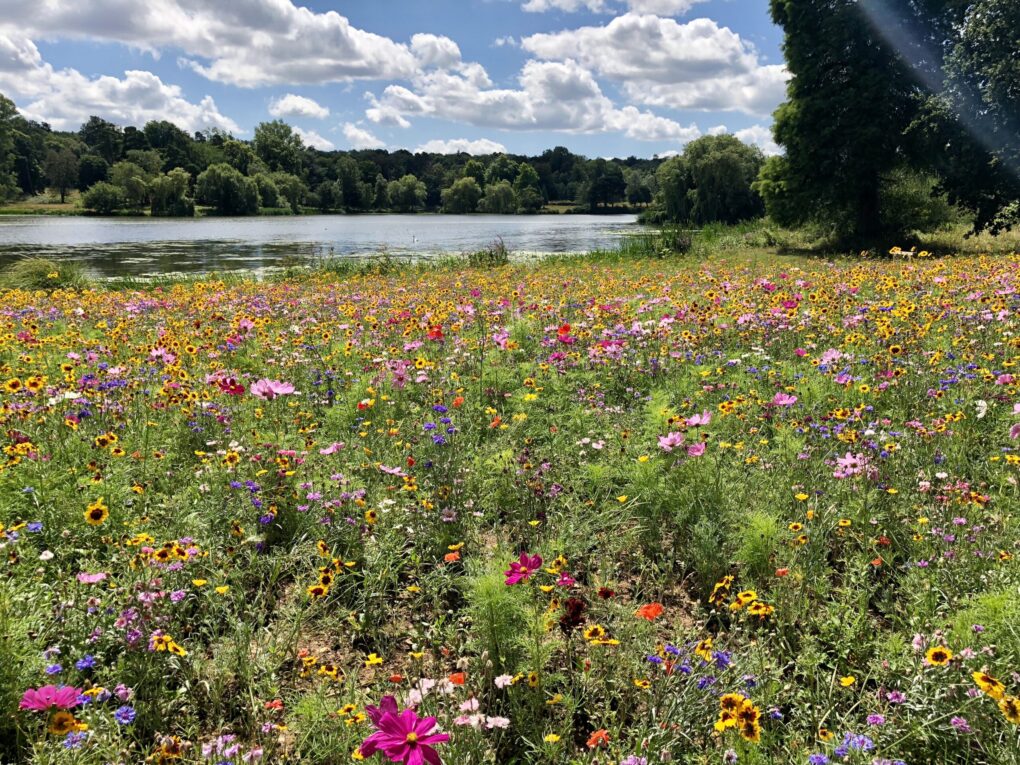
Meadow Flowers
In June you can see beautiful Wild Orchids growing behind the Edwardian Boathouse and along Lake Walk. We are also working with the Kent Wildlife Trust, converting one of the riverside meadows into a proper wildlife meadow but his project will take a few years to reach fruition. We have already established yellow rattle which helps reduce the dominance of some of the grass and have a good number of wild flowers growing along the river bank.

